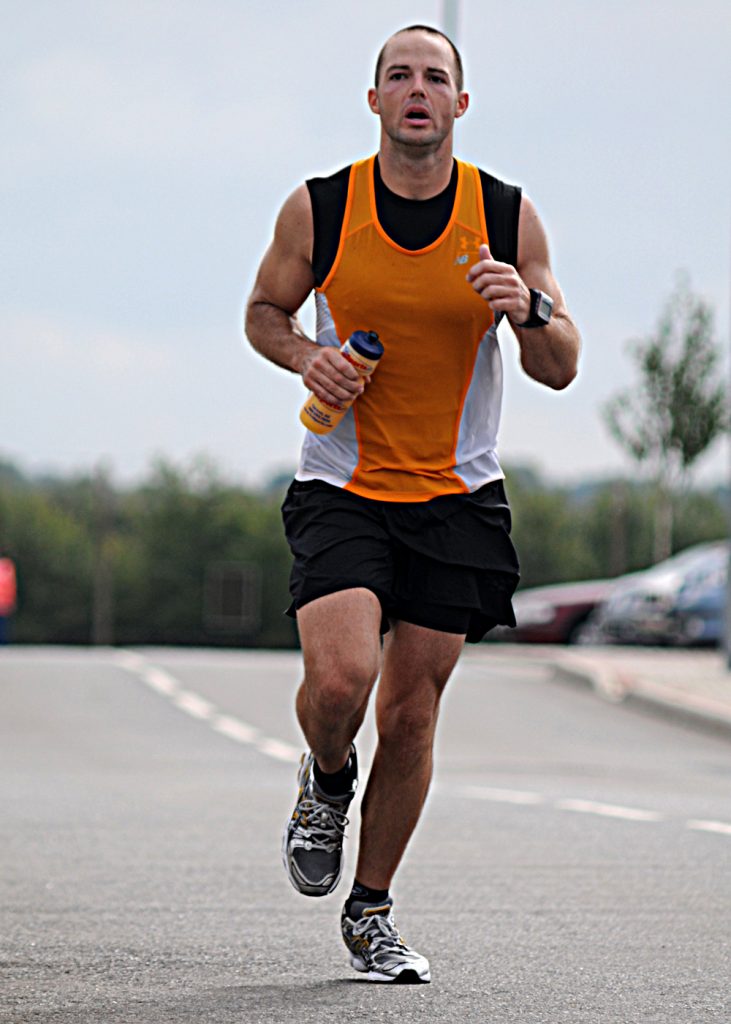Shin Splints
 Shin splints is one of the most common causes of leg pain in runners. The most common cause for shin splints is repetitive running on hard surfaces. Although not all of the mechanisms and risk factors for shin splints are clear, the symptoms could be related to the stress response of the fascia and periosteum at the medial border of the tibia.
Shin splints is one of the most common causes of leg pain in runners. The most common cause for shin splints is repetitive running on hard surfaces. Although not all of the mechanisms and risk factors for shin splints are clear, the symptoms could be related to the stress response of the fascia and periosteum at the medial border of the tibia.
Flexor Digitorum Longus and Soleus
The flexor digitorum longus (in the deep posterior compartment of the leg) and the soleus (in the superficial posterior compartment of the leg) attach to the posteromedial border of the tibia, which is one of the two most common sites affected by shin splints (the other commonly affected site for shin splints is the anteromedial border of the tibia where the tibialis anterior attaches). This suggests that shin splints could be caused by excessive elongational tension stress and muscle stiffness of these two muscles.
To assess muscles that may be related to the development of shin splints, researchers from Japan used a new instrument called the shear wave elastography to measure the shear elastic moduli (a measure of stiffness) of posterior (lower) leg muscles.

Posterior deep compartment of the right leg. Permission Joseph E. Muscolino. The Muscular System Manual – The Skeletal Muscles of the Human Body, 4ed (Elsevier, 2017).
First Elastography Study
In the first study, the researchers compared muscle stiffness in subjects with a history of shin splints who did not have pain at the time of measurement, and in those without a history of shin splints.
Twenty-four male college runners (age 20.0 ± 1.7 years; height 172.7 ± 4.8 cm; weight 57.3 ± 3.7 kg) participated in this study; 14 had a history of shin splints and 10 did not. Using the shear wave elastography instrument, the researchers measured muscle stiffness of the lateral gastrocnemius, medial gastrocnemius, soleus, fibularis (peroneus) longus, fibularis (peroneus) brevis, flexor hallucis longus, flexor digitorum longus, and tibialis posterior (all muscles of the posterior leg).
The measurements showed that shear elastic moduli (measure of stiffness) of the flexor digitorum longus and tibialis posterior in subjects with a history of shin splints were significantly higher than in those with no history. There was no significant difference in the stiffness of other muscles.
Second Elastography Study
In the second study, the researchers investigated the effect of 30 minutes of running on shear elastic modulus of the posterior (lower) leg in healthy subjects. The study involved 20 healthy males (age 20.9 ± 0.6 years of age; height 169.6 ± 4.5 cm; weight 62.6 ± 5.2 kg). The shear elastic modulus of the posterior (lower) leg was measured using ultrasonic shear wave elastography before and immediately after a 30-minute running task.
The results showed that the stiffness of the flexor digitorum longus and tibialis posterior were significantly increased after the 30-minute running task. There were no significant changes in shear elastic moduli of the lateral gastrocnemius, medial gastrocnemius, fibularis longus and fibularis brevis.
Conclusion
Based on the two studies, the researchers suggested that flexor digitorum longus and tibialis posterior stiffness could be related to the development of shin splints. Therefore, these muscles should be palpated and assessed in our clients who present with shin splints.
This blog post article was created in collaboration with www.terrarosa.com.au.
(Click here for the blog post article: What is Shin Splints and What Are Its Causes?)


